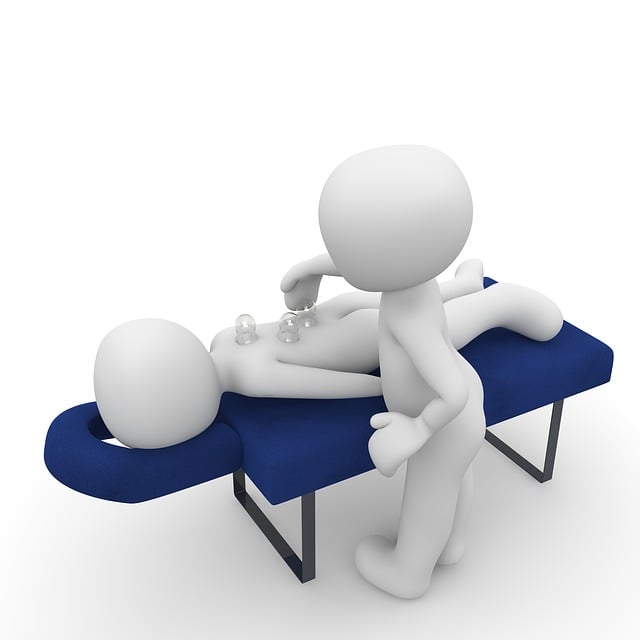Cell regeneration is vital for skin health and youthfulness, and cold water exposure, like ice baths or cold showers, is a natural method to stimulate this process. By activating stem cells, improving blood circulation, accelerating skin repair, and boosting collagen production, cold exposure promotes healthier, more vibrant skin, known as cold exposure for skin rejuvenation. Incorporating regular cold water practices into skincare routines can significantly enhance rejuvenation efforts. This trend offers benefits like improved blood circulation, reduced inflammation, and increased elasticity, with potential variations in results based on individual health factors. Caution is advised for those with medical conditions or sensitivities.
Stimulate your skin’s natural cell regeneration with cold water exposure—a promising, non-invasive therapy gaining traction in skincare. This practice, often referred to as cold exposure therapy, has been shown to enhance cellular renewal, improve skin elasticity, and reduce inflammation, leading to a youthful glow. Uncover the science behind this ancient technique, learn its benefits for skin health, and explore simple ways to incorporate cool water into your daily routine for optimal results in achieving radiant, rejuvenated skin.
Understanding Cell Regeneration and Its Benefits for Skin
Cell regeneration is a natural process where old or damaged cells are replaced with new ones, ensuring our bodies’ continuous renewal and repair. When it comes to skin health, this mechanism plays a pivotal role in maintaining a youthful appearance and overall well-being. The skin, as the largest organ, requires constant rejuvenation to combat the effects of aging, environmental stressors, and daily wear and tear.
Cold water exposure, particularly through practices like ice baths or cold showers, has gained attention for its potential to stimulate cell regeneration. This therapeutic approach triggers a series of physiological responses in the body, including increased blood circulation and the activation of stem cells. As a result, it can accelerate skin repair, enhance collagen production, and improve overall skin texture, making it a promising method for those seeking natural skin rejuvenation techniques.
The Science Behind Cold Water Exposure and Its Impact on Cells
Cold water exposure, particularly through practices like ice baths or cold showers, has gained attention for its potential to stimulate cell regeneration and promote skin rejuvenation. The science behind this lies in the physiological response of the body to extreme cold temperatures. When exposed to cold, blood vessels constrict, reducing blood flow to the extremities. This triggers a process where the body begins to conserve energy and resources, redirecting circulation to vital organs. As a result, cells undergo various beneficial changes.
One key effect is the activation of stem cells, which are responsible for repairing and replacing damaged tissue. Cold exposure can also stimulate the production of new collagen, a protein crucial for maintaining skin elasticity and youthfulness. Additionally, cold water helps flush out toxins by increasing lymphatic flow, further contributing to cellular renewal. These processes collectively support healthier, more vibrant-looking skin, making cold exposure a promising natural method for skin rejuvenation.
Incorporating Cold Water Exposure into Your Skincare Routine
Incorporating regular cold water exposure into your skincare routine can be a powerful tool for achieving and maintaining skin rejuvenation. The practice, often referred to as cold therapy or cryoskin, has gained popularity due to its ability to stimulate cell regeneration and boost collagen production. When you expose your skin to cold temperatures, it triggers a series of beneficial responses: blood vessels constrict, temporarily reducing inflammation and stimulating the release of antioxidants. This process helps to protect existing cells and prepares the skin for repair.
Additionally, cold water exposure can enhance lymphatic drainage, which is crucial for eliminating toxins and metabolic waste from the body. By promoting efficient drainage, your skin appears more plump, radiant, and healthy. Many people incorporate this practice into their daily rituals, such as ending a shower with a quick splash of cold water or using ice masks, to experience these rejuvenating effects. It’s a simple yet effective way to support your skin’s natural healing processes and keep it looking its best.
Potential Benefits and Considerations for Cold Exposure Therapy
Cold water exposure, a practice gaining traction in the wellness world, offers a range of potential benefits for those seeking to enhance their well-being and promote cell regeneration. When combined with regular exercise or skin care routines, cold exposure therapy can stimulate blood circulation, increasing nutrient delivery to cells and promoting faster healing. This process is particularly beneficial for the skin, as it can help reduce inflammation, improve skin tone, and enhance elasticity—all contributing to a rejuvenated appearance, often associated with the term cold exposure for skin rejuvenation.
However, it’s essential to consider that while cold therapy shows promise, individual responses may vary. Factors like overall health, duration of exposure, and water temperature play a role in determining the effectiveness and safety of this practice. Those with certain medical conditions or sensitivities should exercise caution and consult professionals before incorporating extreme cold exposure into their routines.
Cold water exposure has emerged as a promising natural method for stimulating cell regeneration, offering significant potential for skin rejuvenation. By integrating this practice into your skincare routine, you can harness the power of cryotherapy to enhance cellular repair and promote a healthier, more vibrant complexion. Remember that, while cold exposure therapy shows promise, individual results may vary, and it’s essential to consult with a dermatology professional before incorporating any new treatments.
